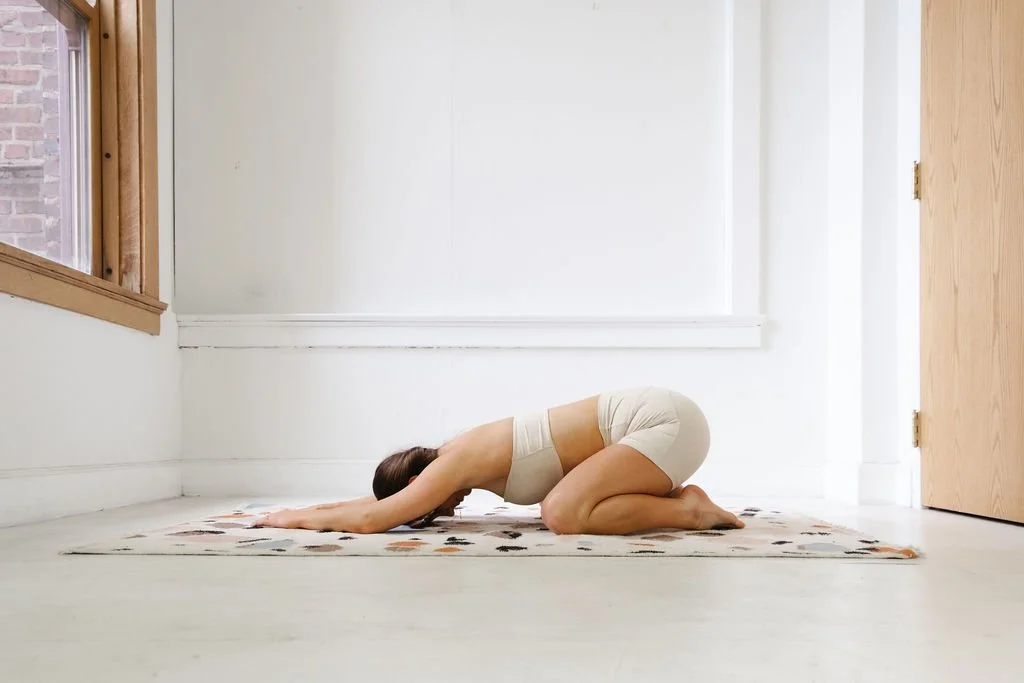How To Relax Your Pelvic Floor
Before I get into how to relax your pelvic floor, let’s first start by understanding what the pelvic floor is and why we need to learn how to relax it.
The pelvic floor consists of three layers of muscles with nerves interwoven through the muscles, and connective tissue assisting to hold the intricate layers together in order to allow them to move and work harmoniously together. These muscles can get tight just like any other muscle in our body! They require stretching and work to elongate them in order to restore them back to their optimal range of motion. Because these muscles are internal, we don’t often think about them until we notice a problem. And even then, how do we figure out how to “stretch” an internal muscle?? It definitely takes practice, but learning this technique can make a huge difference not only on your pelvic floor but how you feel overall!
How to Know if You Have a Tight Pelvic Floor:
If you’re unsure on how a tight pelvic floor may present, here are a few signs…
Constipation
Incomplete emptying of the bowels
Straining when emptying the bowels
Stringy or thin feces
Pelvic pain
Low back pain
Hip pain
Tailbone pain
Painful sex
Incontinence
Unable to fully empty bladder
Frequent urination
Painful urination
UTI symptoms with a negative urine test for UTI
Hard time starting the flow of urine
What can cause a tight pelvic floor?
If you can relate to a few of those symptoms above, you may be wondering how this even happened in the first place. How does your pelvic floor get overly tight? There are several factors that can contribute and may play a role in a tight pelvic floor.
Stress
History of “holding in urine” or “holding in bowel movement”
Chronic UTI’s
Obesity
Pregnancy
Emotional and physical trauma or abuse
Childbirth
Poor posture
Butt clenching
Low Back Pain
IBS
Endometriosis, PCOS, other pelvic dysfunctions
Painful Periods
A Few Tips to Get Started:
Some of those factors listed above can be solved by simply adjusting a few postural components. Here are a few tips…
Slouching - sit upright with a pillow under your sacrum to help prop you up in a better, more neutral position
Stop butt clenching - being mindful that you may even do this is a great starting point to be able to stop clenching!
Change up your position! Our bodies were meant to be in motion - sitting or standing for TOO long are both not ideal.
Releasing Pelvic Tension:
Now, I want to share with you a few exercises to help relax your pelvic floor. To get the MOST out of these exercises, make sure to focus on deep, diaphragmatic breathing during each pose. Think about feeling your pelvic floor relax, dropping down and opening up with each inhalation. If you’re not sure what this looks like, check out this reel for some breathing tips!
Also, I have a FREE resource that you can download instantly by clicking below that will provide further information, tips and exercise ideas for reducing your tense pelvic floor. Check it out by clicking the button below!
Three Exercises to Relax the Pelvic Floor:
Okay, back to those exercises…here’s THREE really great ones to reference and save for later!
Try these exercises for 3-5 minutes per exercise to get a full relaxation session in. Making these a part of your daily routine will help to reduce pelvic tension and continue to keep it at bay!
1. Child’s Pose - Feet together, knees apart, relax and breathe!
2. Happy Baby - Feet apart, knees apart, relax and breathe!
3. Diamond Pose - Feet together, knees apart, relax and breathe!
Mind Body Core
If you’ve tried everything and nothing seems to be helping, the MBC App is your next step. Inside, you’ll find specific guidance for healing a tight pelvic floor — along with expert-led programs to support your deep core, pelvic floor, and overall strength. From breathing techniques to mobility flows and strength progressions, you’ll get step-by-step tools that meet you exactly where you are.
Your subscription includes unlimited access to all programs, educational resources, weekly workouts, and the full pelvic floor support library. Click below to learn more and start feeling better, from the inside out.



